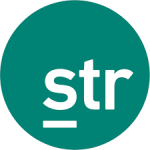HENDERSONVILLE, Tennessee—Canada’s hotel industry reported slightly lower performance from the previous month, according to STR’s April 2021 data.
While year-over-year percentage changes show significant increases because of comparison with a pandemic-affected period in 2020, the country’s performance levels remained well below the pre-pandemic comparable of April 2019:
- Occupancy: 29.4% (-52.7%)
- Average daily rate (ADR): CAD113.77 (-25.1%)
- Revenue per available room (RevPAR): CAD33.41 (-64.6%)
“ADR followed a similar pattern and fell month over month in April. However, the metric is holding relatively strong as hoteliers know that cutting rates is unlikely to generate demand in this environment.
“During this third wave of COVID-19 cases, the vaccine rollout has ramped up significantly, and as of May 23, 51.3% of Canadians had received at least one dose, which surpassed the 49.3% mark in the U.S. New cases are plummeting across much of the country, which will have a positive impact on travel demand once stay-at-home orders and domestic restrictions are lifted. Some of the orders are expected to be lifted over the next few weeks—just in time for hoteliers to benefit from pent-up domestic leisure demand in Q3. We expect this to have a real impact on resort locations and smaller cities, while demand in larger urban areas is expected to lag. The updated STR forecast shows some international and corporate travel demand is expected to resume in Q4. There is, however, an element of risk surrounding the timing of the reopening of the U.S./Canada land border. The longer-term recovery outlook remains unchanged with demand not exceeding 2019 levels until 2024.”
Among the provinces and territories, New Brunswick recorded the lowest April occupancy level (24.3%), which was 53.8% below the pre-pandemic comparable.
Among the major markets, Montreal posted the lowest occupancy (21.6%), which was a 69.0% decline from 2019.
The highest occupancy among provinces was reported in British Columbia (34.5%), down 49.2% against 2019. At the market level, the highest occupancy was reported in Vancouver (35.5%), which decreased 55.2% from 2019.
Additional Performance Data
STR’s world-leading hotel performance sample comprises 68,000 properties and 9.1 million rooms around the globe. Members of the media should refer to the contacts listed below for additional data requests.


